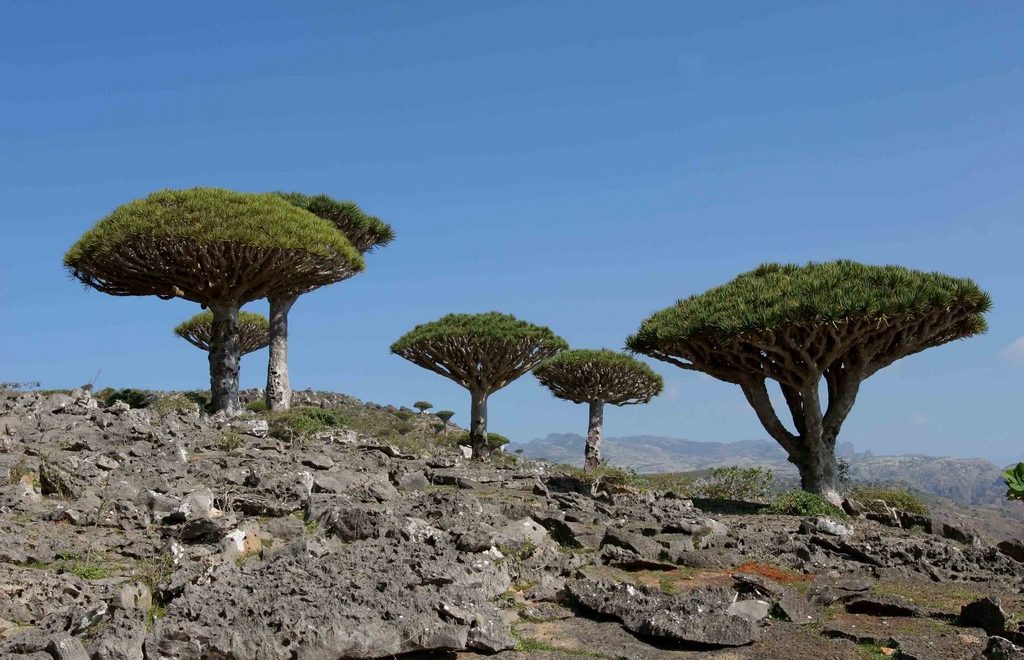
Off the Horn of Africa, Socotra is a unique example of biodiversity, earning it the name of the "Galapagos of the Indian Ocean". This richness led to it being classified as a World Natural Heritage Site by UNESCO in 2008.

In the north of the island, Boswellia sacra trees (incense trees) watch over hikers.
Battered to the north by the waters of the Gulf of Aden and to the south by those of the Indian Ocean, the island of the Phoenix, as the Greeks called it, is not easy to get to. Winds of force 6 to 7 generate heavy swells seven months out of the year, often preventing the island from being moored. For a long time, Socotra was only accessible by sea, and has remained naturally protected. This isolation has given it the distinction of having preserved an endemic flora, i.e. one that only grows in this particular part of the world.
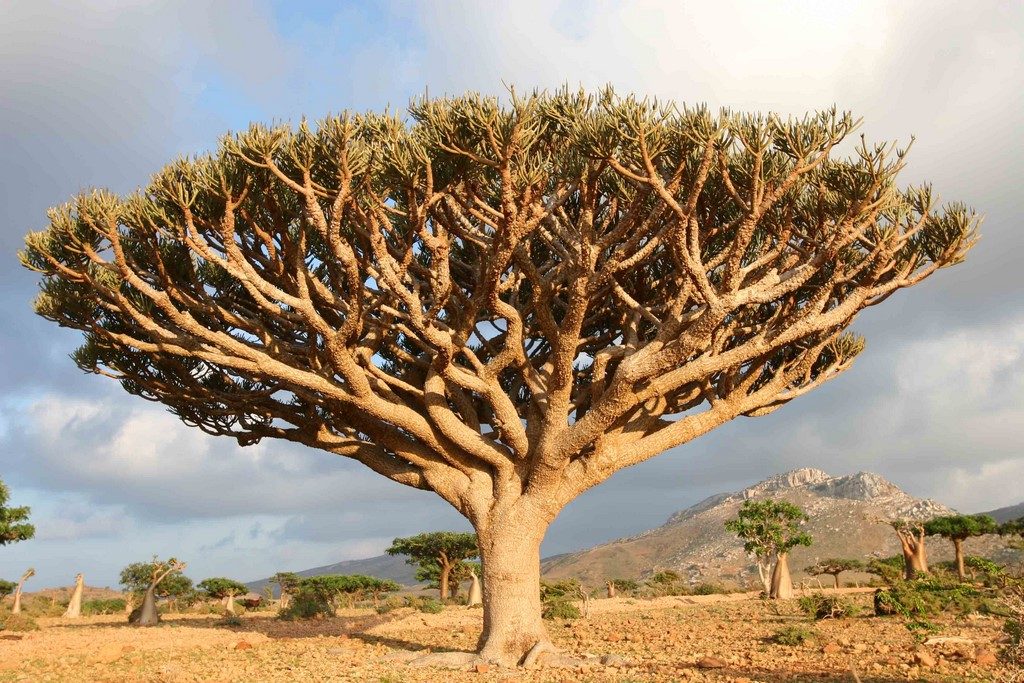
Here, euphorbias (Euphorbia arbuscula) are trees. They grow on both the high limestone plateaux in the north of the island and the granitic rocks along the coast.
For centuries, Greek, Arab and Indian sailors have challenged its rocky coastline and violent winds every year to bring back the precious, fragrant resin gums that have given the island its name (Socotra, literally the "souk of smells") and Aloe succotrina, which the Greeks used to treat the wounds of their soldiers.
The dragon?s blood, emblem of the island
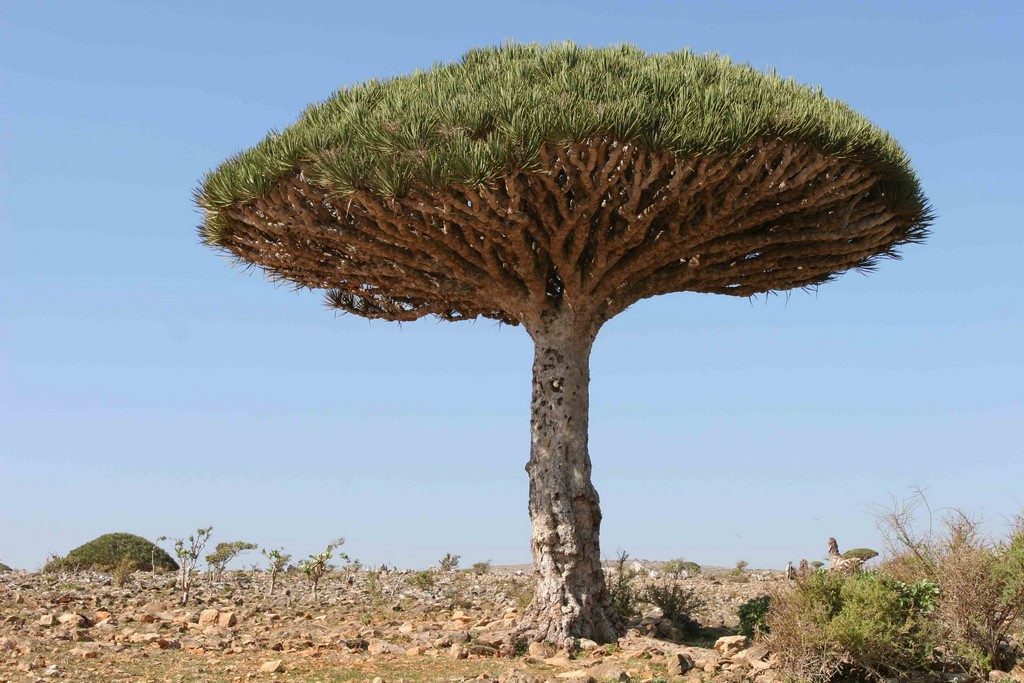
A dragon-blood raises its umbrella-shaped crown to the sky.
Of the 850 plant species listed, more than a third are specific to the island. This is the case of the astonishing dragon blood (Draceana cinnabari) or dragon tree, a remnant of African vegetation from the Tertiary era.
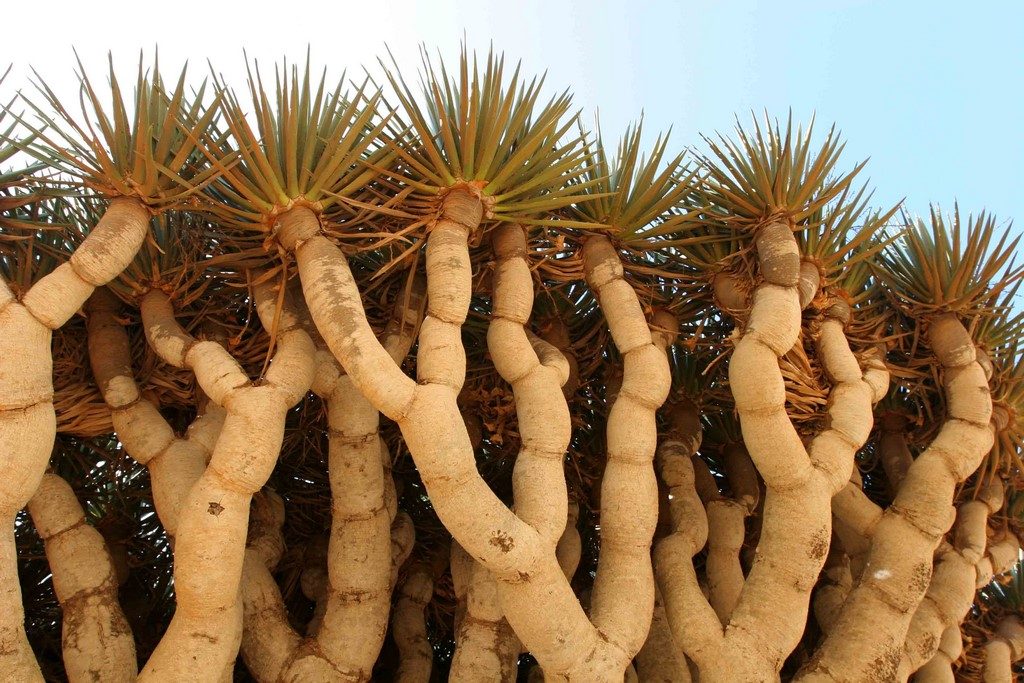
The dragon?s blood?s sword-shaped evergreen leaves capture the moisture in the mists that fall over Socotra.
According to local legend, the dragons of Socotra were born from the blood of a dragon defeated by an elephant. For the Greeks, it was the blood spilt by Ladon, the hundred-headed dragon charged with guarding the entrance to the Garden of the Hesperides, struck down by Hercules during his labours, that gave rise to this tree. Its sap, a resin that oxidises and dries in the open air to a blood-red hue, is the stuff of myth? and was credited with mystical powers by alchemists. It is also the blood with which the luthiers of Cremona coated their violins that is said to have given the Stradivarius its distinctive timbre.

The limestone massifs in the north of the island, criss-crossed by cracks and sheer cliffs, are home to the largest collection of dragon?s blood.
Majestic silhouettes that stand out from the ridge line, dragon sang trees are scattered across the high limestone plateaux of central France. Today, these mushroom trees with their fingers reaching for the heavens are suffering from drought and are increasingly threatened by the goats that graze the young plants.
Plants shaped by the climate
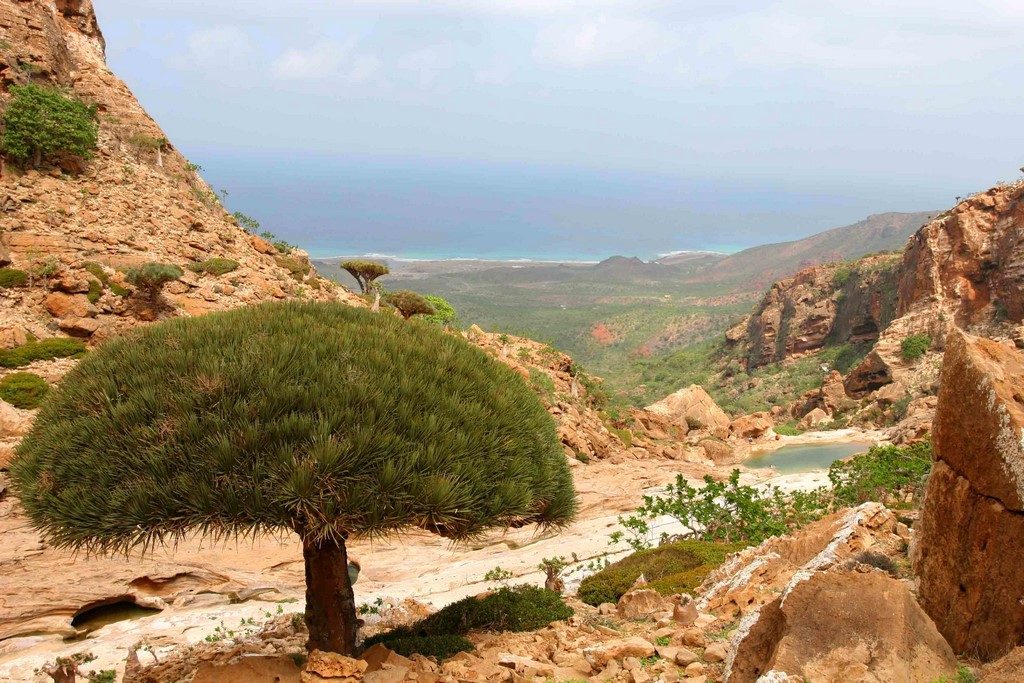
The umbrella of a euphorbia can be seen over the wadi shifa, home to a natural swimming pool.
A walk through the island?s steep wadis reveals a landscape of stone spires, rockfalls and deep faults. In the centre of the island, Djebel Haggier hides natural baths where you can cool off.

Adenium obese or desert rose and incense tree. The name adenium seems to come from the name of the city of Aden.
Swept by the winds for more than 6 months of the year, Socotra is home to species with smooth trunks. These include the desert rose (Adenium obesum) and the famous Socotra fig tree (Dorstenia gigas). Overlooking an emerald lagoon, dorstenias cling to the vertical walls of some of the cliffs.
In this environment of dead coral rock, a catalogue of euphorbias, aloes and myrrh trees thrives.
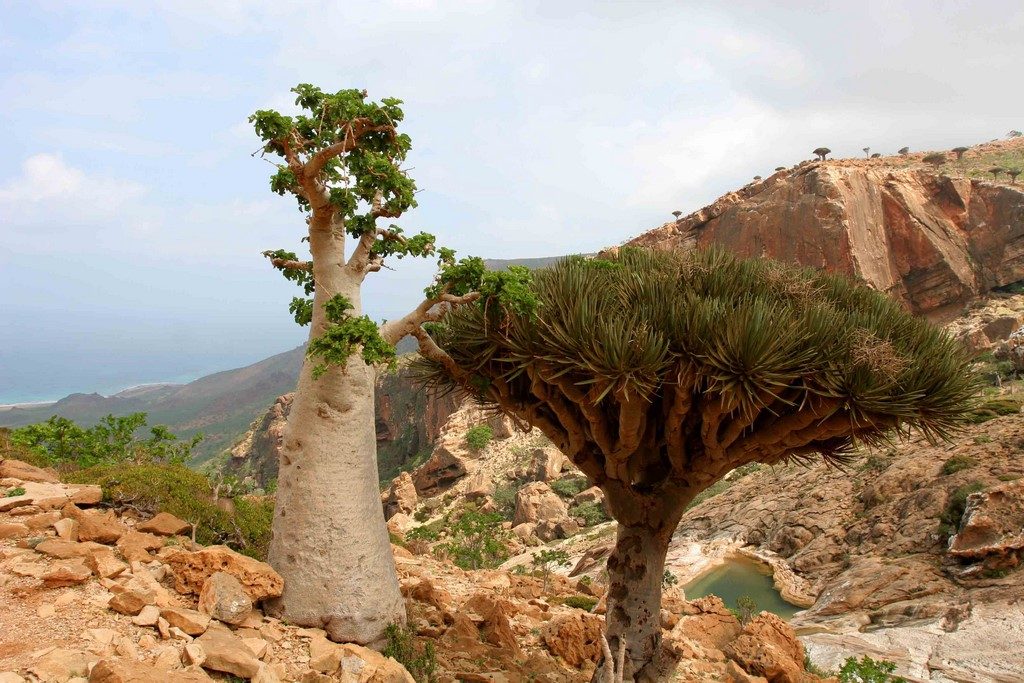
The strange cucumber tree (Dendrosycyos socotrana) can reach a height of 4 metres.
Incense trees (Boswellia), of which there are 7 species on the island, can be found almost everywhere. Near the coastal strip, mini-forests of crotons cover the ground. This incredible vegetation makes Socotra the fourth most important island in terms of biodiversity. In recent years, conservation programmes have been set up to protect this natural but fragile botanical garden.
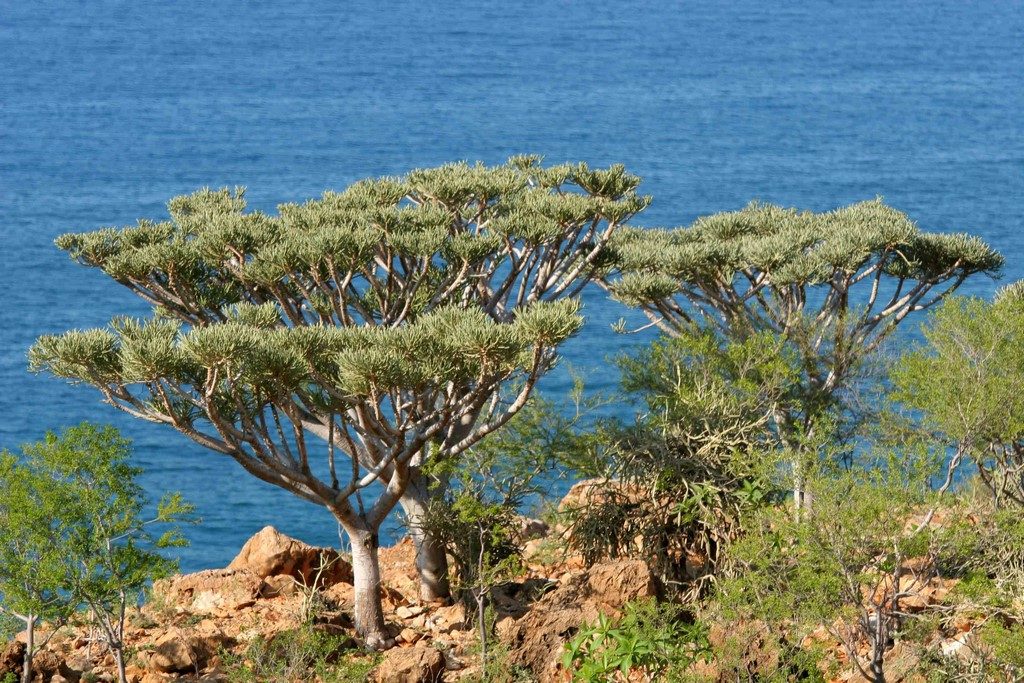
After forming a highly branched bush, Euphorbia arbuscula becomes a true tree as it ages. The young plant is used as fodder by local herbivores which, when the year is dry, can graze the plant right down to the roots, leading to a decline in the species.
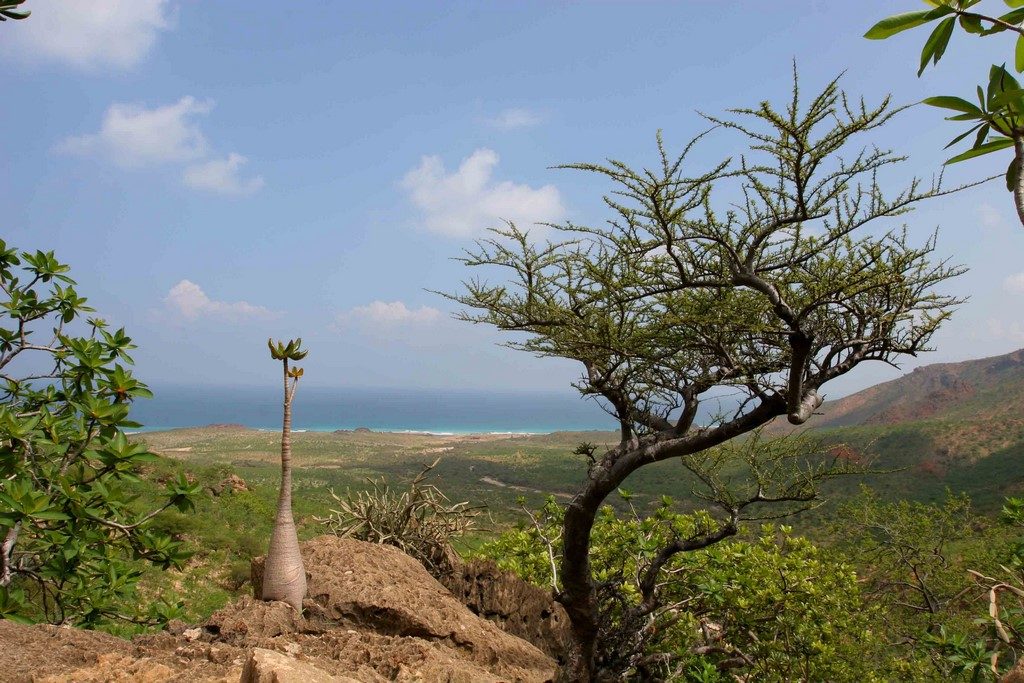
Less common than the incense tree, the myrtle tree produces a resin used for its fragrance and antispasmodic action.
Socotra today
Situated around 350 kilometres off the southern coast of Yemen, Socotra has so far been spared the conflict raging in the country. However, the island has not escaped the effects of climate change. In 2015, two cyclones hit the island in the space of a week, causing extensive damage to the mostly rudimentary stone-built dwellings, and half the population was displaced.
At the beginning of 2016, the self-proclaimed Yemeni President considered leasing the island of Socotra to the United Arab Emirates for 99 years in order to develop tourism there, as a reward for their support in the fight against the Houthi rebels. Other sources point to a possible takeover of the island by the United States, to combat terrorism in Yemen by turning it into a military base. Ultimately, no one can predict what Socotra will look like in a few years? time.
At the moment, you can't go to Socotra. Yemen no longer issues visas and flights from Sanaa and Dubai have been suspended.
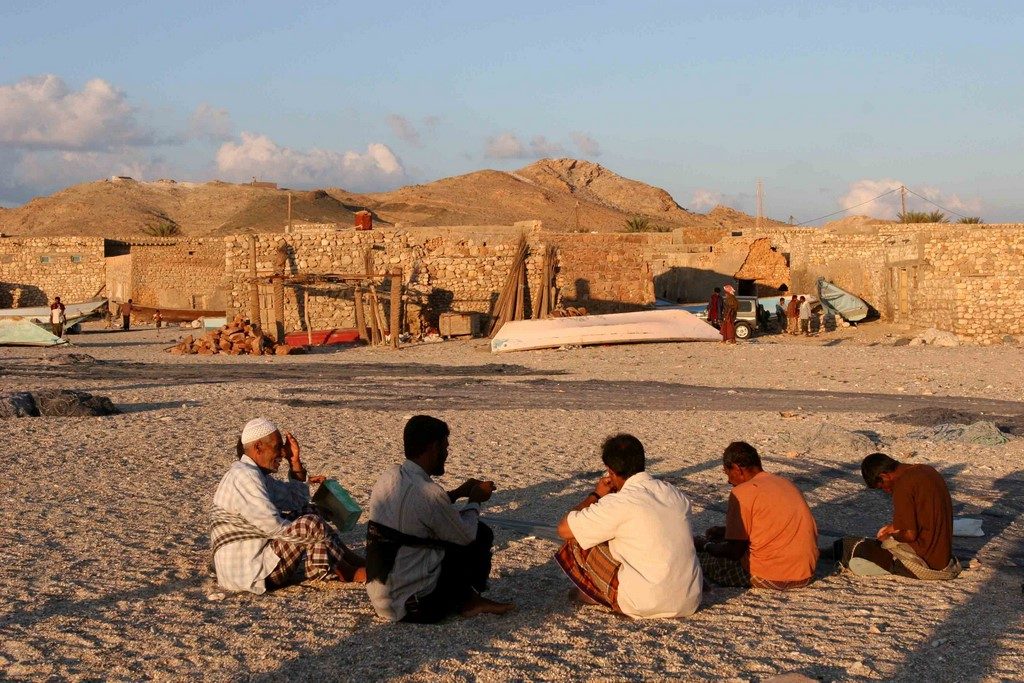
Socotris fishermen repairing their nets.
Text and photos: Brigitte Postel

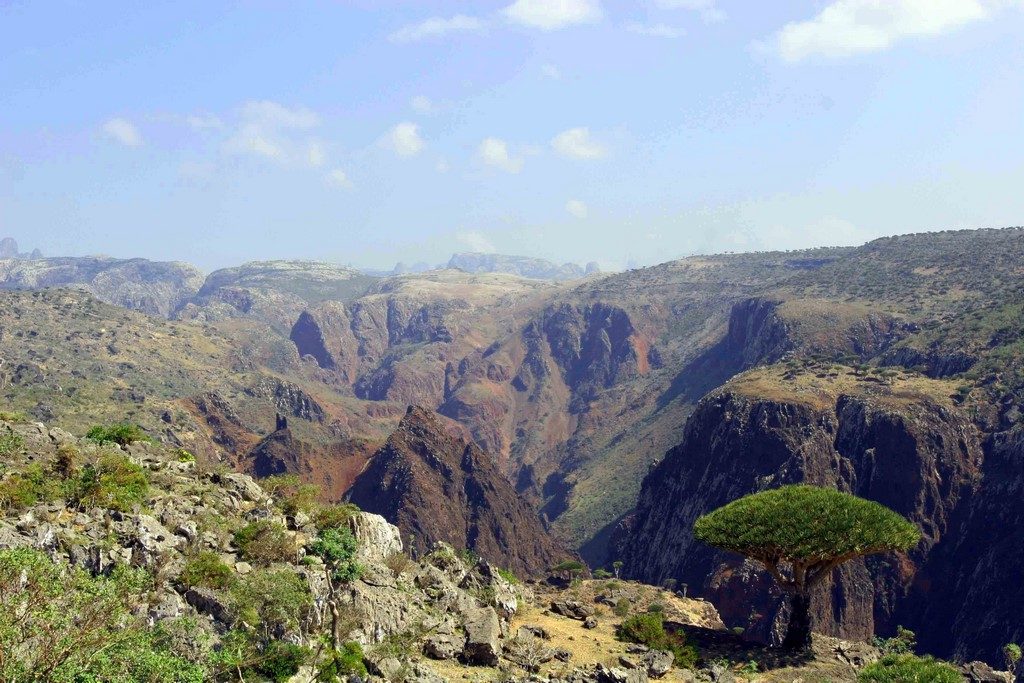
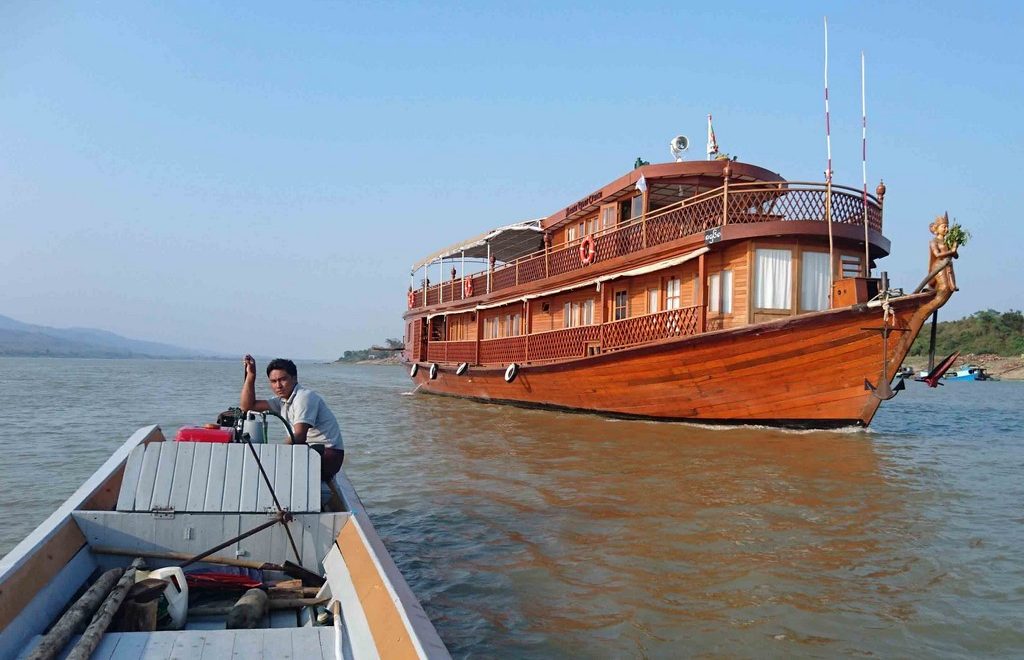
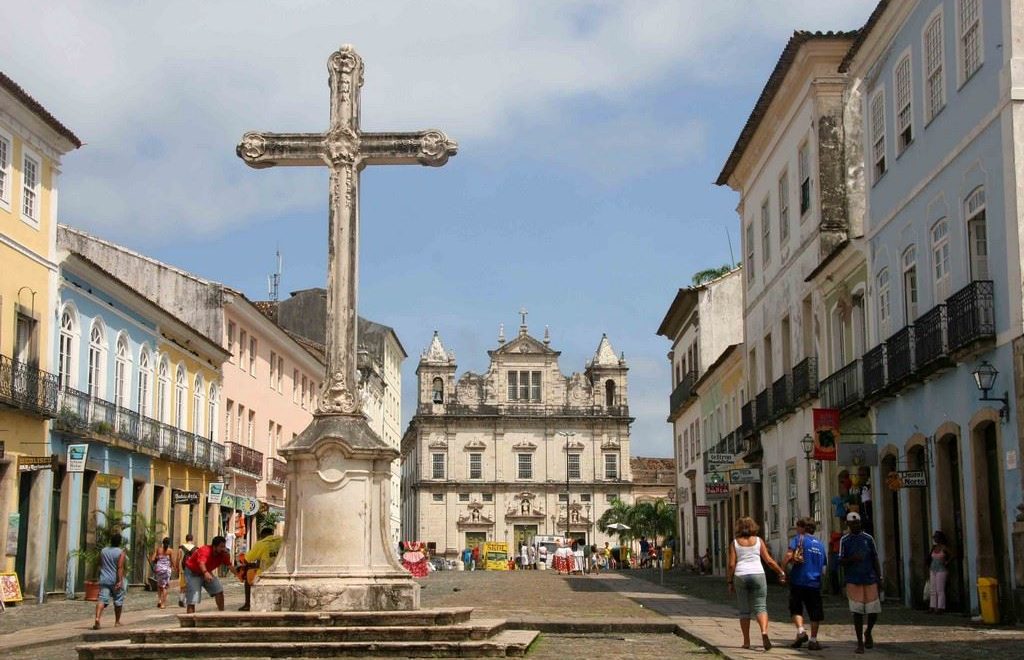
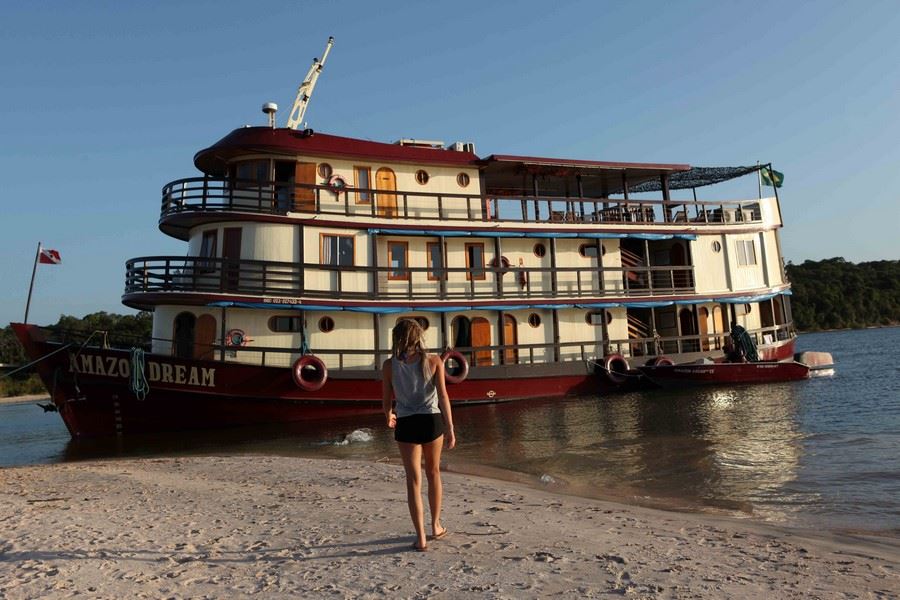

This is it, it's absolutely perfect! A very happy 2017
Excellent article!
Well done Brigite Postel and thank you Univers voyage.